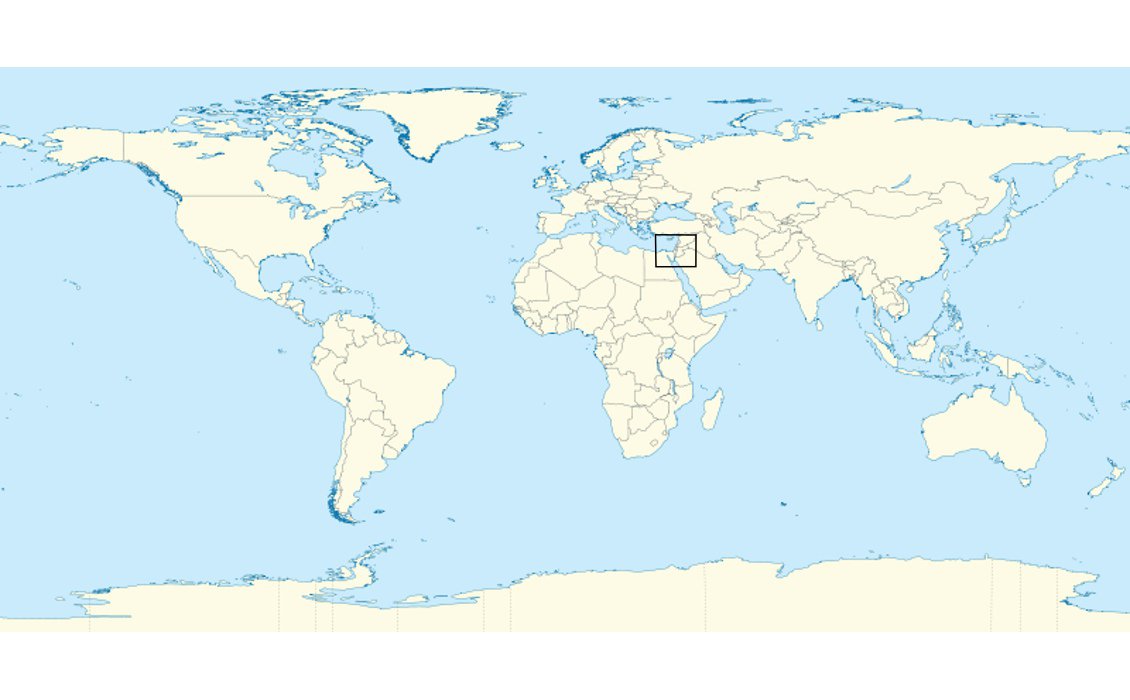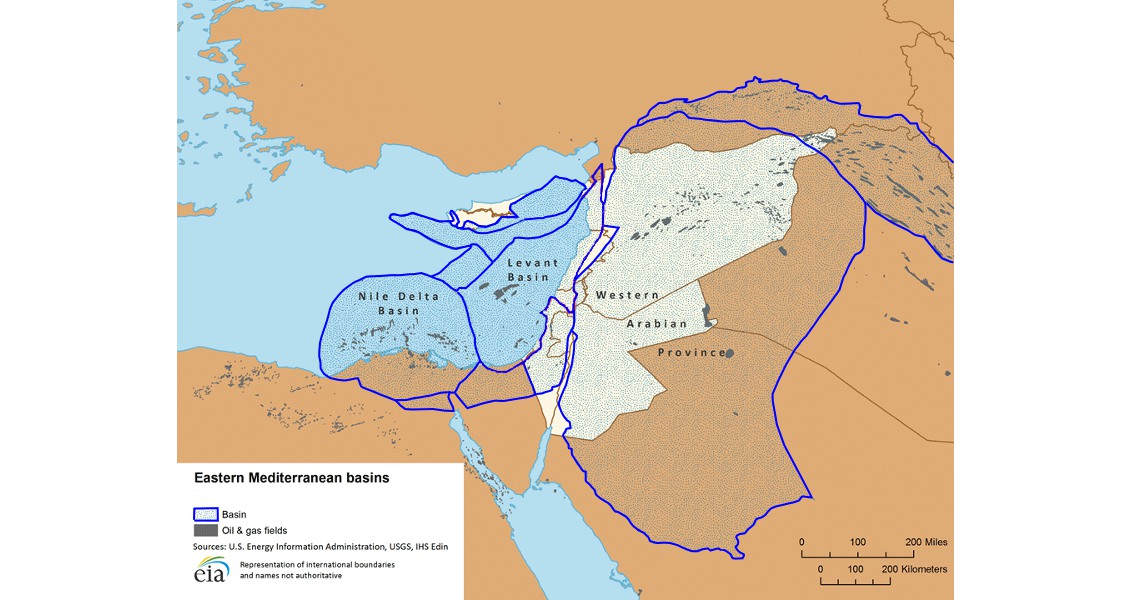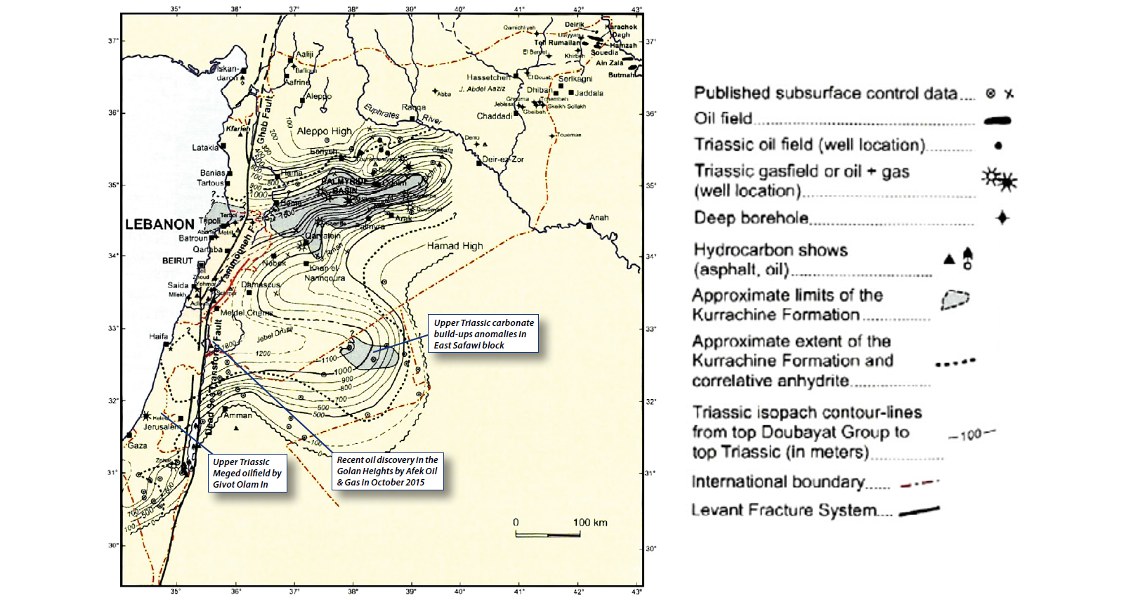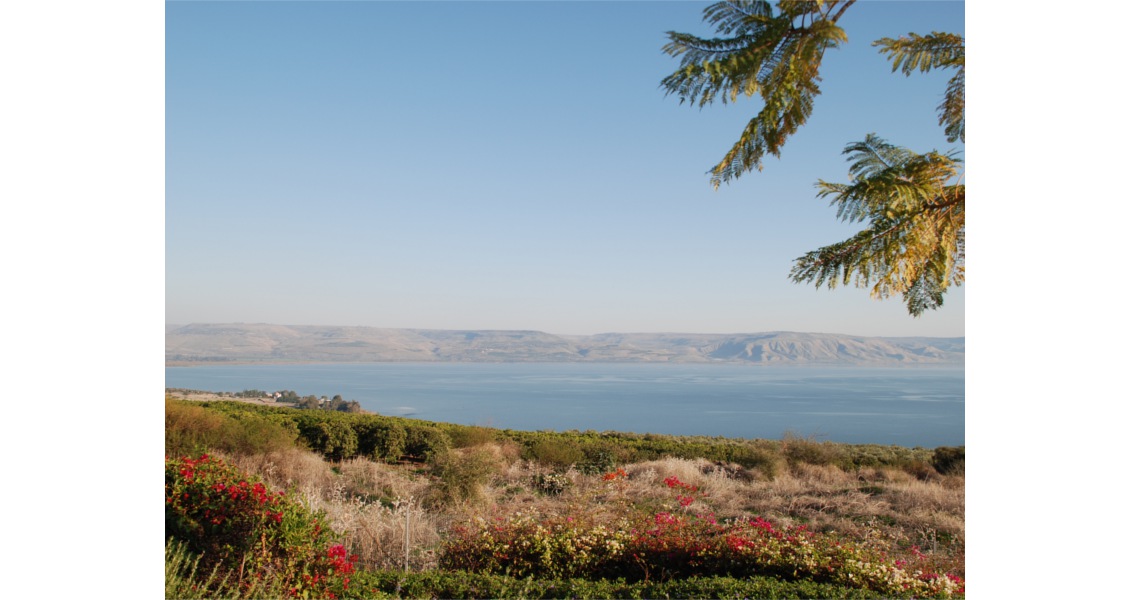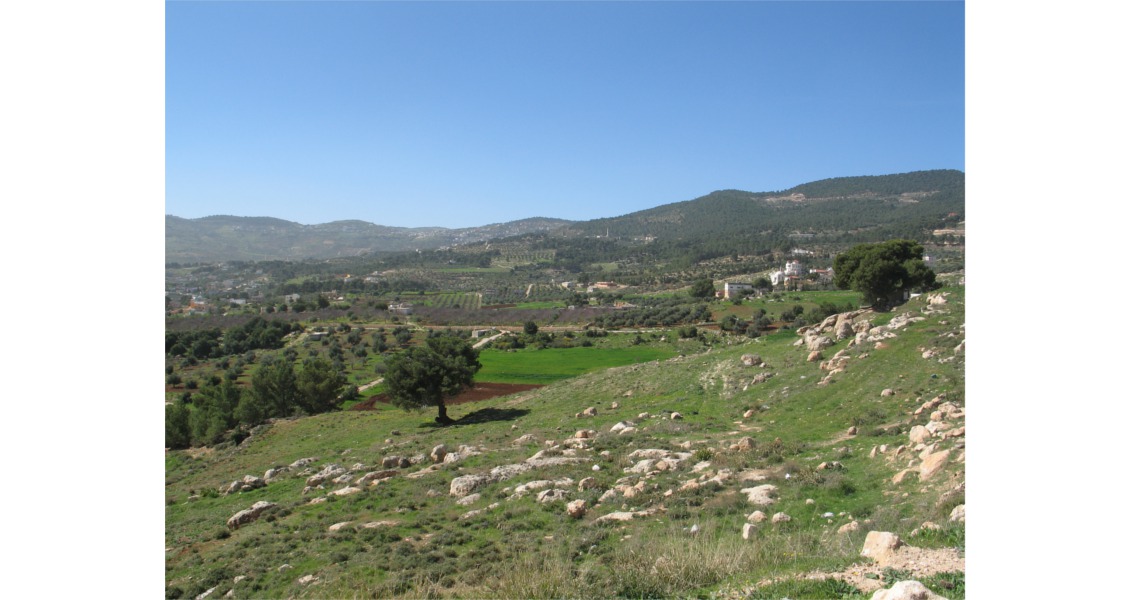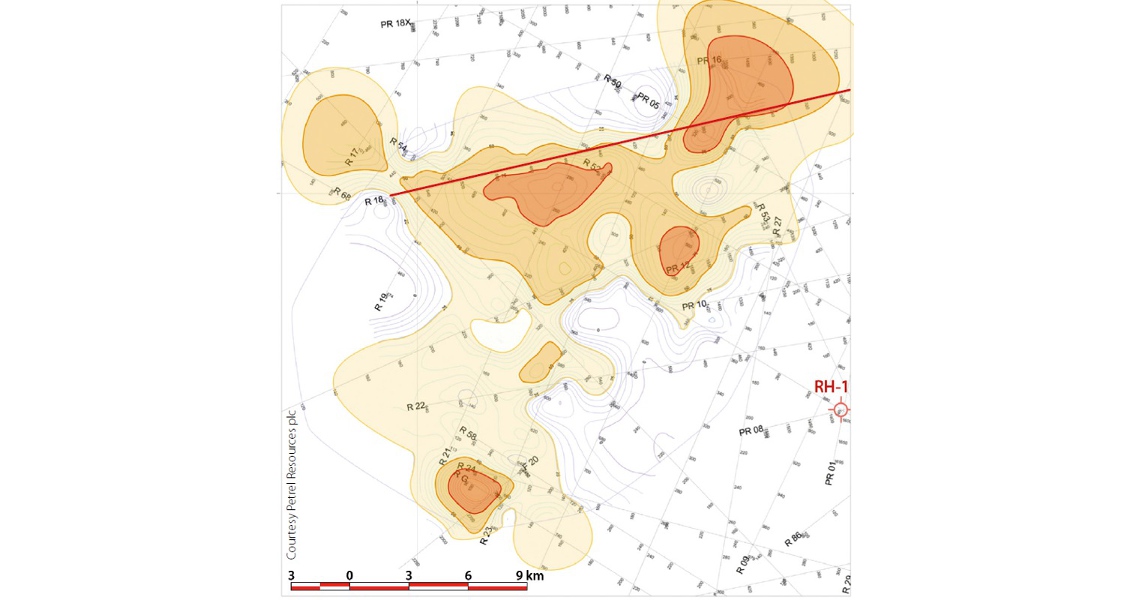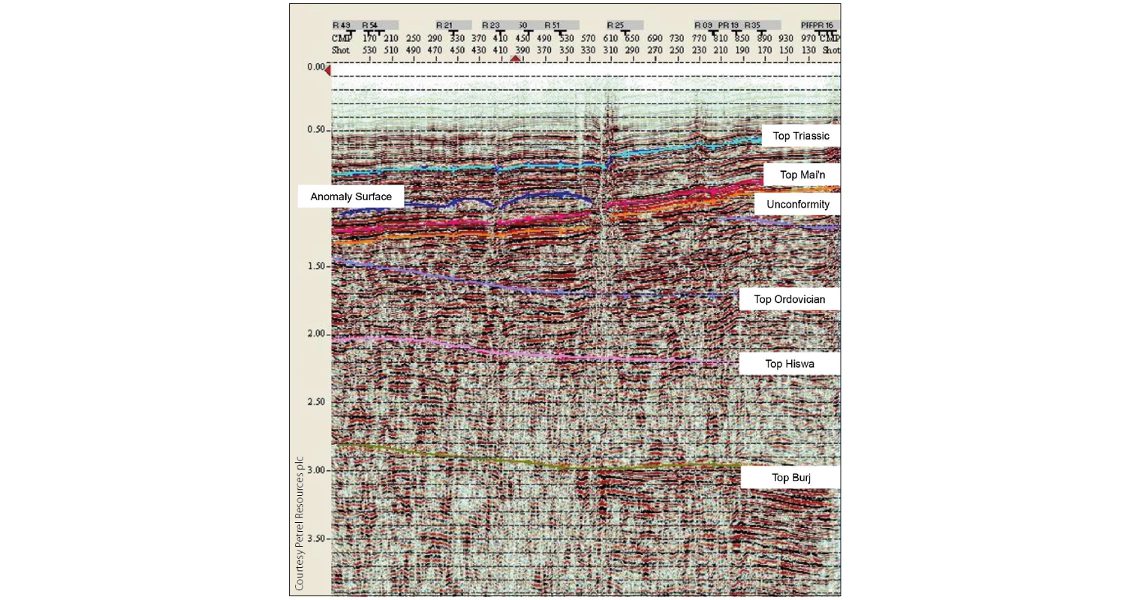The Levant covers a large onshore area in the East Mediterranean region including Lebanon, Syria, Jordan, Palestine and Israel. The Triassic carbonate is already a proven reservoir and play in the region, with several oil and gas fields having been discovered in Triassic carbonate reservoirs in the Triassic Basin in Syria. Petroleum exploration in the southern margin of the Triassic Basin has also found important oil discoveries in onshore Israel and the occupied Golan Heights. In this article we look at those discoveries and consider exploration by Petrel Resources in northern Jordan, which revealed a similar possible carbonate build-up anomaly in the Triassic carbonate formations in the East Safawi block, west of the Risha gas field in north-east Jordan.
The potential of the Triassic hydrocarbon exploration in Jordan and the region was highlighted by the late Professor Ziyad Beydoun of the American University, Beirut (AUB), in a geological conference in October 1994 in Amman, Jordan. His views were published in the Journal of Petroleum Geology (Beydoun and Habib, 1995) before the passing away of Prof. Beydoun in 1998.
Triassic Exploration: Syria and Israel
Exploration in the Triassic in Syria began in the early ’60s, with the first discovery in 1963 being the Middle Triassic Kurrachine reservoir at the Khirbah field, situated in the North Syria Platform. Although it was only small scale, it paved the way to further Syrian Triassic discoveries, which by 2003 had reached a total of 38 fields, six in the Upper Triassic Mulussa Formation and 32 in the Middle Triassic. All of these are located within the Triassic Basin in Syria, but none are in the southern Triassic margin.
In Israel Triassic exploration began in the early ’80s with the drilling of Atlit-1, a deep well in the north which flowed asphalt from the top Triassic and had 100m of strong oil shows in the Upper Triassic before being abandoned due to hole problems. Zuk Tamrur, found in the ’90s in southern Israel near the Dead Sea, produced 250,000 barrels of light oil from the Lower Triassic Ra’af carbonates before depletion. In the area from Tel Aviv northward, several wells drilled in the ’90s had shows in the Triassic (OGJ, 2002).
In 2002 Zion Oil & Gas Inc. began developing the Triassic reef play in the Ma’anit Licence area in northern Israel, bordering the north-west of the Palestinian West Bank Territory. It was targeting a buried platform or barrier reef potentially sealed by Upper Triassic and Lower Jurassic shales and anhydrites. With this in mind, in 2005 the company drilled Ma’anit-1 on the Ma’anit structure and drilling breaks and shows of hydrocarbons were recorded from 3,650m to the total depth of 4,570m, but it was determined that the well was not commercially viable. In 2009, Zion drilled the Ma’anit-Rehoboth-2 well in the same area and small quantities of crude oil were produced, but the company determined that commercial quantities of hydrocarbons were not present, and later the same year some evidence of oil was seen in a well in a neighbouring licence, targeting the same play.
Recent Israeli Discoveries
In 2004 a commercial oilfield, Meged, was discovered in Israel, east of Tel Aviv, lying west of the border with the West Bank in Palestine. The reservoirs are Triassic carbonate equivalents of the carbonate formations in southern Syria and northern Jordan and the oil is sourced from the Lower Silurian shales. Seven other deep (Triassic and deeper) wells have been drilled in Israel. Of these, Deborah-2a had live oil shows, fluorescence and chloroform cuts in the samples, but the reservoir was tight.
Three drillings have so far taken place in the southern Golan Heights, which have found large reserves of oil. The most recent, on 7 October 2015, was when Genie Energy’s subsidiary Afek Oil & Gas announced a significant oil discovery there, reportedly from well Ness-6. According to press reports, the reservoir here is 350m, so there could be potential for significant quantities of hydrocarbons. It is assumed that the reservoir is Triassic, as that is the only reasonable play objective in this area.
Triassic Exploration: Palestine and Jordan
Oil exploration in Jordan, including the West Bank of Jordan in pre-1948 Palestine, began in 1956. The Ramallah-1 well was drilled in 1958 in the West Bank and had oil shows in the Jurassic and Triassic formations. The other three wells subsequently drilled in the West bank, Halhul-1, Mar Saba and Jericho-1, also reached the Jurassic formations.
In Jordan Suweileh-1, drilled in 1960 west of Amman, was the first well to penetrate the Triassic at shallow depths overlying the Cambrian formations. It had oil and gas shows, presumably in the Cambrian. Several other wells in Jordan penetrated the Triassic formations with no significant record of hydrocarbons, but three wells drilled near the northern border with Syria had oil and gas shows in the overlying Jurassic formations, and the hydrocarbons may have migrated from Triassic source rocks in Syria. These wells were North Highland-1 (1987), which reached the Cambrian formations and North Highland-2, also drilled in 1987, and which extended to the Precambrian basement. The third well was Ramtha, drilled in 1970, which reached the Triassic formations.
Triassic Stratigraphy and Shows in Jordan
In northern Jordan, the basal Triassic section – the Ma’in Formation – comprises an interbedded sandstone and shale sequence, with some carbonate interbeds. The thickest sand intervals occur in well RH-1, drilled in north-east Jordan close to the Syrian border. The average porosity is in the order of 17% to 19%. Although the interval has reservoir potential, no hydrocarbons were indicated in a petrophysical analysis of the four wells drilled to date in the East Safawi block (RH-1, RH-2, RH-11 and RH19).
The middle section of the Triassic (top Um Tina to top Ma’in) comprises a varied limestone sequence with interbeds of shale and dolomite. Porosity and reservoir potential are low, with the exception of parts of the Mukheiris Formation seen in wells RH-1 and RH-19. The logs show the porosity to be very variable, ranging from zero to as high as 30% for some intervals in RH-19. Wells RH-1 and RH-2 show only limited higher porosity streaks that give an average porosity of around 14% over a net section of 4–10m. RH-11 has more potential but this is restricted mainly to the Mukheiris interval where the average porosity is around 20% over 15m; the other intervals on this well are similar to RH-1 and RH-2. RH-19 has higher porosity within the Um Tina, Iraq Al-Amir and Hisban than the other wells, but the sequence also appears to be more interbedded with shale.
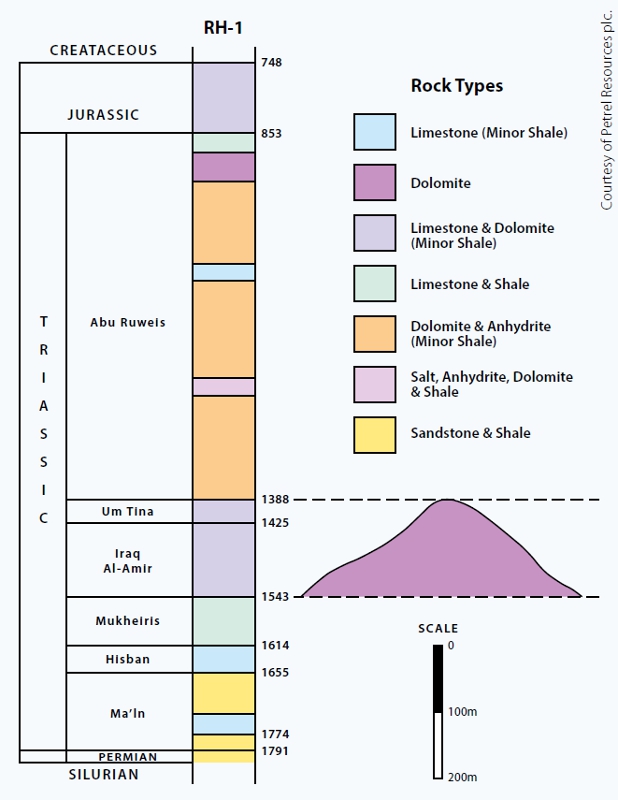 Triassic stratigraphy in the Safawi Block, Jordan. After Naylor, et al., 2015.Again, although there is reservoir potential, little evidence of hydrocarbons was reported from this section. The well report for RH-1 records some ‘uneven bitumen distribution’ within this part of the section. No shows are reported for RH-19 but the logs appear to suggest some definite potentially movable hydrocarbon-bearing intervals within the Mukheiris.
Triassic stratigraphy in the Safawi Block, Jordan. After Naylor, et al., 2015.Again, although there is reservoir potential, little evidence of hydrocarbons was reported from this section. The well report for RH-1 records some ‘uneven bitumen distribution’ within this part of the section. No shows are reported for RH-19 but the logs appear to suggest some definite potentially movable hydrocarbon-bearing intervals within the Mukheiris.
The upper part of the Triassic section in northern Jordan (Abu Ruweis Formation) consists mainly of dolomites with interbeds of anhydrite and salt. The log responses do not indicate the presence of hydrocarbons within this interval in any of the wells.
Bitumen has been recorded at several levels in the Triassic. In the RH-1 and RH-2 it occurs patchily in the upper Abu Ruweis and more consistently through the lower Abu Ruweis, Um Tina and Iraq Al-Amir Formations, and into the top of the Mukheiris Formation. There are records of bitumen throughout the Hisban Formation, but little in the Ma’in Formation.
These Jordanian formations can be compared to the Meged oil field in Israel, where the main reservoir is the Upper Triassic Mohilla Formation, which is divided into three different members. From oldest to youngest these are known as Mohilla ‘A’, ‘B’ and ‘C’. The Mohilla Formation is correlative with the Abu Ruweis Formation in northern Jordan.
The main reservoir in Meged is the Mohilla ‘A’ member, which consists of a porous carbonate grainstone facies with porosities ranging between 3% to 12% and permeabilities ranging between 0.5 to 5mD. This is encountered below 4,000m in the Meged closure and covers an area of around 180 km2. The overlying anhydritic mudstones of the Mohilla ‘B’ and ‘C’ members provide the top seal over the structure. Hydrocarbons in the Meged oil field are sourced from the regionally present Silurian shales, as typed by oil recovered from the Meged-2 and 4 wells.
Carbonate Build-Up Anomaly
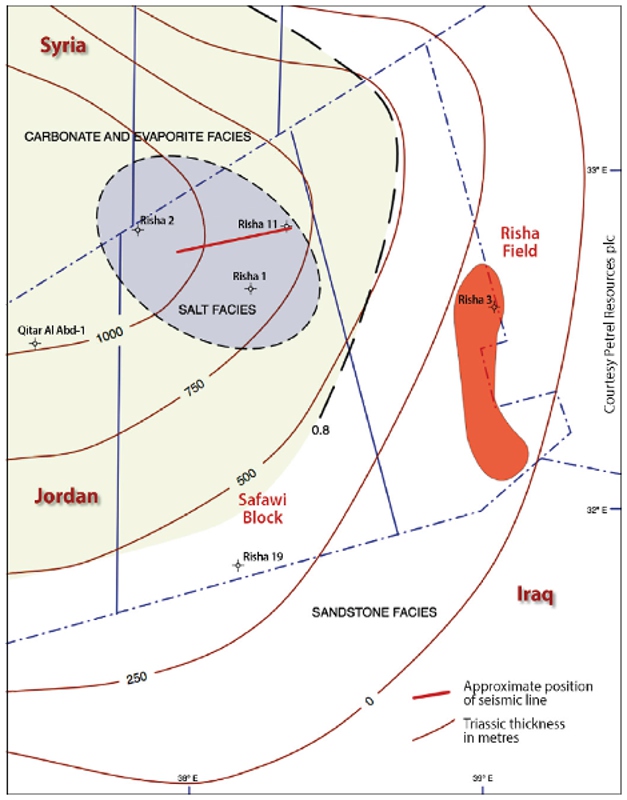 Salt facies anomaly within the Triassic carbonate and evaporite facies in north-east Jordan. After Naylor, et al., 2015.Could there be carbonate reef play in the Triassic of Jordan similar to that in Ma’anit in Israel? A number of anomalous seismic features were noted within the Triassic interval on several seismic lines during a study undertaken for Petrel Resources in 2005. Although there appeared to be some type of build-up within the section against which beds at the same level abut, it was also possible that they were merely seismic artifacts. However, re-processing of all the seismic lines has shown that the features are actually real.
Salt facies anomaly within the Triassic carbonate and evaporite facies in north-east Jordan. After Naylor, et al., 2015.Could there be carbonate reef play in the Triassic of Jordan similar to that in Ma’anit in Israel? A number of anomalous seismic features were noted within the Triassic interval on several seismic lines during a study undertaken for Petrel Resources in 2005. Although there appeared to be some type of build-up within the section against which beds at the same level abut, it was also possible that they were merely seismic artifacts. However, re-processing of all the seismic lines has shown that the features are actually real.
When all examples of these features were plotted (both ‘possible’ and ‘relatively certain’), they were seen to fall within the central part of the Triassic Basin, where salt is developed within the Abu Ruweis Formation. Onlap of younger strata can be observed on the flanks of the features. Given the facies setting and lithologies, together with the form of the features, a carbonate build-up (reef or bank) is the most feasible explanation. Based on the well-ties and horizon picks, these carbonate build-ups appear to have been established on the Mukheiris Formation platform or on the basal unit of the over-lying Iraq Al-Amir, and at their thickest (135–150m) extend up to a level equivalent to the top of the Um Tina Formation or into the basal beds of the Abu Ruweis Formation. It is interesting to note that this is the stratigraphic level at which oil was observed during drilling up-dip at the RH-11 well, which is about 15 km to the east. The build-ups were presumably upstanding during their growth, although the surrounding areas were probably incrementally filled, but at slower rates. The upstanding feature appears to have been contiguous throughout its extent, rather than forming a series of independent pinnacles.
Further Work Needed
The recent Upper Triassic oil discoveries in central Israel and the Golan Heights and the Triassic section in northern Jordan all contain intervals of reservoir quality beneath the evaporite-salt horizons of the Abu Ruweis Formation and its equivalents in Israel, the latter providing a regional seal and some protection against reservoir breaching. Unfortunately, the current seismic interpretation maps in northern Jordan do not show well-defined undrilled structural closure at Triassic levels and further work is needed in this area.
Exploration stratigraphic leads such as the carbonate build-up anomalies should be seriously considered as exploration targets as they are expected to occur in carbonate basin margins such as that of the Triassic Margin in the Levant.


